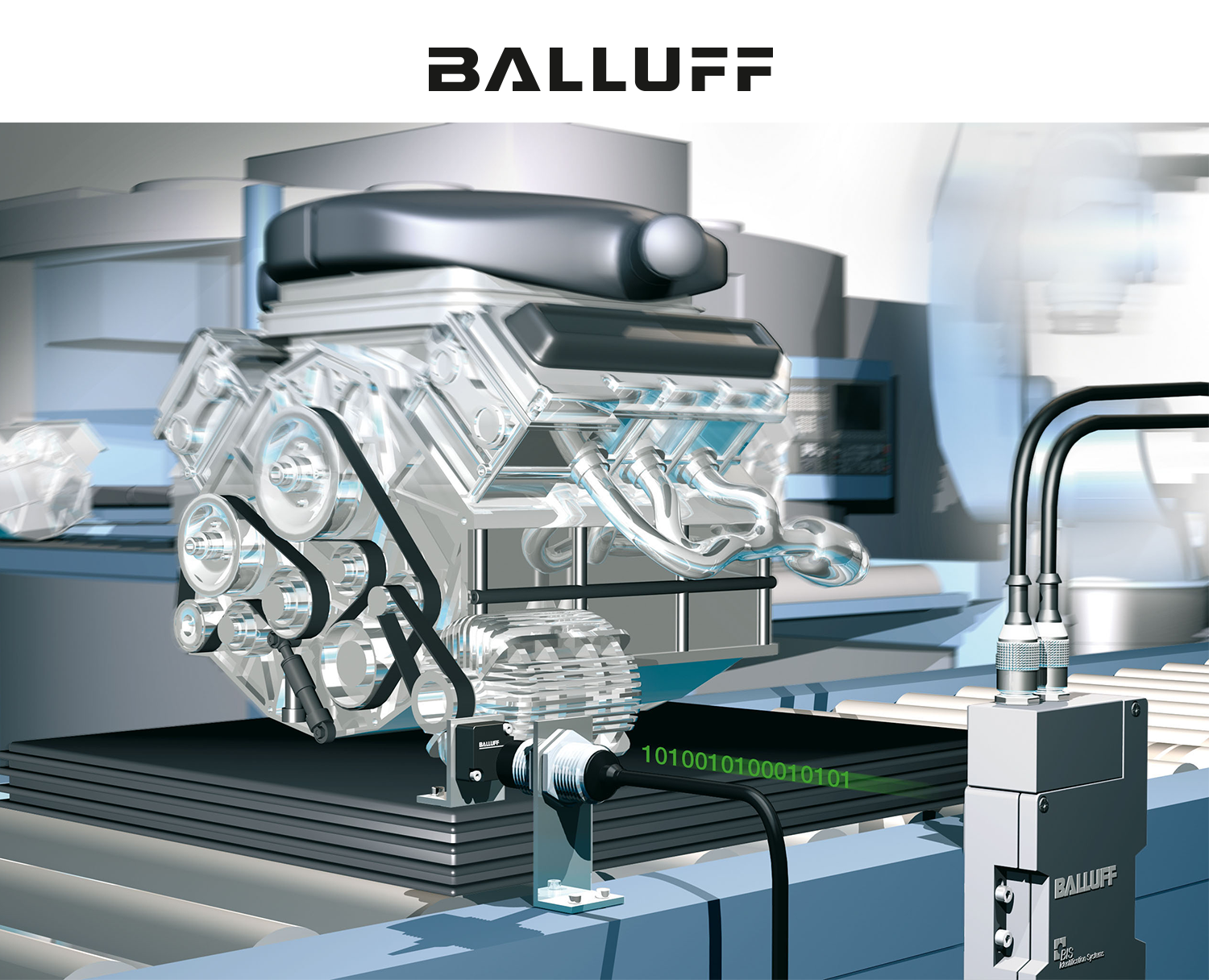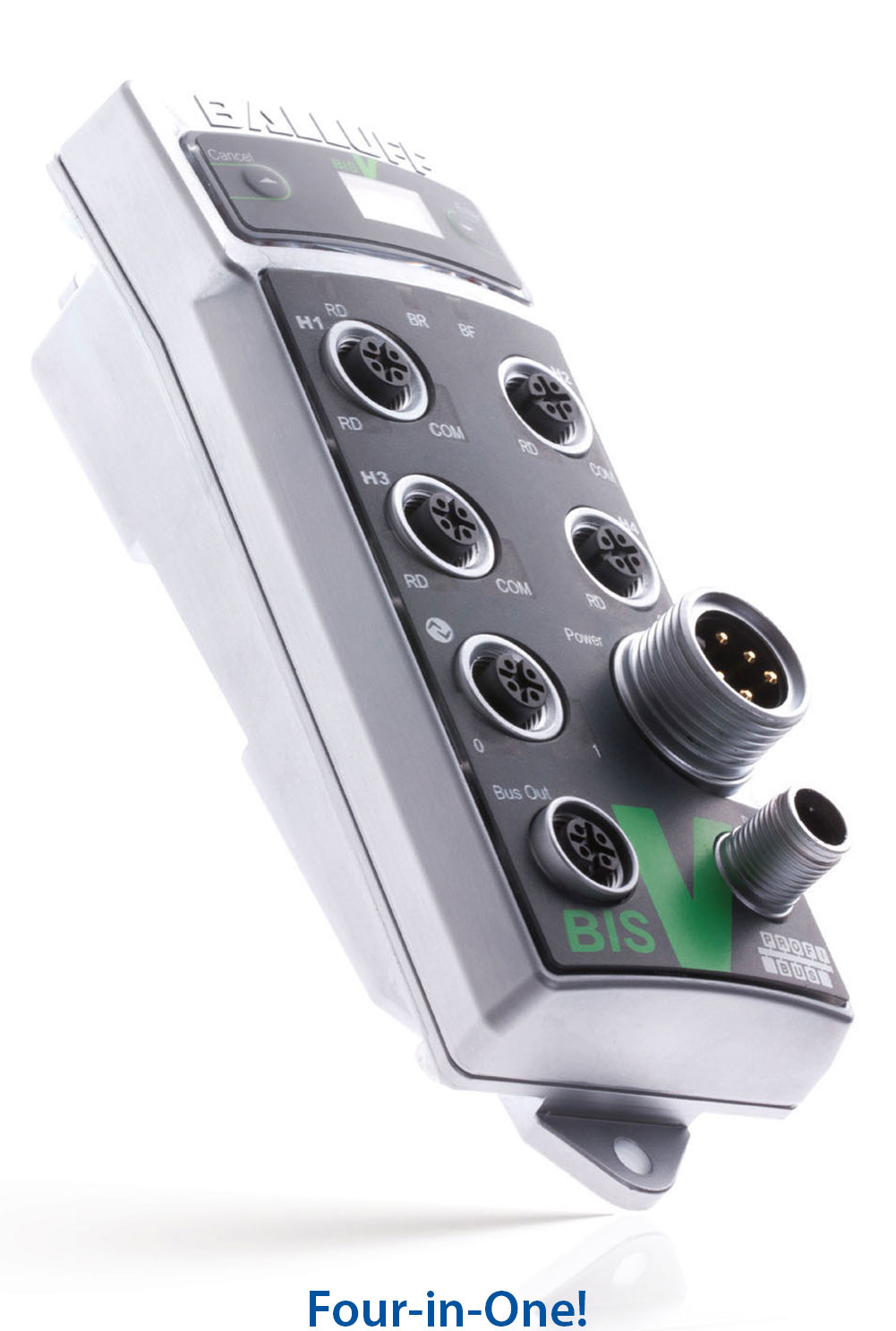
Tool-ID and workpiece tracking come together
RFID systems with various frequency ranges are finding increasing use in modern production and assembly
plants. Each system is designed for different applications. Low-frequency (LF) systems are suited mainly for
applications in metallic surroundings. High-frequency (HF) systems are the ideal choice where a greater
read/write distance and high speed are paramount. Since each system until now required its own RFID controller type, this was not only cumbersome but also expensive for the user. With the BIS V All-in-One
RFID processor from Balluff the situation has changed. This model represents the best of both worlds, since
it allows up to four read/write heads to be operated simultaneously regardless of whether LF or HF.

